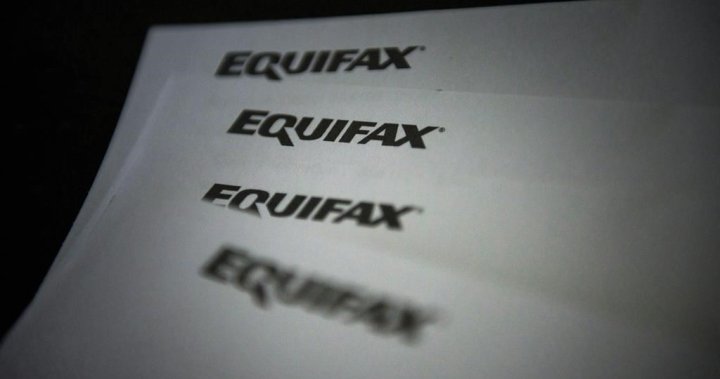Ottawa’s Han Langenbahn has a daily ritual of checking the weather forecast in Brazil.
The master roaster at Happy Goat Coffee Co., a chain of cafés in the nation’s capital, says it’s a hectic time for the industry.
Bouts of severe drought in Brazil and Vietnam are among a handful of factors driving up global coffee prices just when Happy Goat is gearing up to fix bean prices with its suppliers for the months ahead.
Langenbahn tells Global News that the latest price spikes put Happy Goat into a tough position. Either the cafe absorbs the higher costs to take a hit on the bottom line, raises prices for its customers or changes to a cheaper bean — the latter of which is not an option in his mind.
“We don’t cut our quality,” Langenbahn says. “This is not in our mindset. No question for us.”
But he acknowledges the firm stance and the pressures on prices come at a tough time for Happy Goat customers. Inflation may have cooled in recent months, but the cumulative impacts of the recent spikes in prices and higher interest rates aimed at taming the pressures have suppressed spending among Canadians.
“How far can you stretch it so that the consumer will be able to pay? That’s the big question mark,” he says.
“We know money is not sitting as loose in the pockets of many people and that home consumption has increased by a lot. We have to be aware (of that) at the coffee shops.”
Much of the disruption to coffee prices is due to extreme weather impacts in Vietnam and Brazil, which together account for more than half of the world’s coffee production. The drought in Brazil is the worst the country has seen in more than 70 years. It has also been dealing with wildfires.
Adam Pesce, president of Reunion Coffee Roasters, which operates its flagship café out of Toronto, explains that coffee is a particularly sensitive crop, needing precise amounts of rain and sun for an ideal harvest.

Get weekly money news
Get expert insights, Q&A on markets, housing, inflation, and personal finance information delivered to you every Saturday.
While Brazil’s current crop is expected to be plentiful, coffee roasters like Pesce and Langenbahn purchase their beans based on futures prices in the global markets — essentially, where traders expect prices will be months from now.
With expectations of limited supply to come next season based on current weather conditions, coffee futures prices are up roughly 75 per cent from last year, Pesce says.
“The commodity price that really drives the cost of coffee, no matter where you’re buying, it has just skyrocketed,” he says.
Pesce expects prices could rise even higher in the weeks ahead, though he notes that conditions could change in an instant, providing a healthier crop than currently forecast.
With climate change, planning around where coffee prices could be with rapidly changing and more severe weather conditions has become a more challenging process than ever before, Pesce says.
“That’s creating a lot of consternation within the industry of, just how do you plan for that kind of uncertain pricing environment looking forward?”
Over the past year, the average retail price for roasted or ground coffee hasn’t risen much, according to data from Statistics Canada — about 1.6 per cent.
However, over four years, the increase is much steeper: 23.2 per cent between July 2020 and July 2024.
“We’ve seen coffee prices go up in the last couple of years,” says Michael von Massow, food economist at the University of Guelph. “And what this news is suggesting is that they will continue to go up and we’ll feel that in our morning cuppa.”
But he says how much global dynamics in coffee prices affect the end consumer will likely vary on where you’re pouring your cup of joe.
When it comes to coffee grounds or beans bought from the grocery store, von Massow says he expects a “significant increase” in the end price because, while there’s an element of packaging and transportation involved, the product you’re buying is very directly tied to the price of the raw commodity on global markets.
At coffee shops, however, he says the price of a drink also factors in wages, the cost of cups and other inputs like creamers and sweeteners. Those contributing costs can, for lack of a better term, water down the impact of rising coffee bean prices on the total cost being paid at a café.
While prices are going up on coffee, it’s not all great news for farmers if output is down. The volatility in growing coffee is driving some farmers out of the business entirely, von Massow notes, as many rely on the crop for subsistence farming and can’t tolerate erratic yields.
Impacts to the supply of premium beans can also drive down quality, von Massow suggests, if retailers turn to cheaper beans in their products to save on their margins.
For those like Happy Goat who are unwilling to trade down, coffee prices will have to compensate for a commitment to quality.
While Langenbahn acknowledges consumers might not be as willing to pay top dollar in tight economic times, he takes some comfort knowing other roasters are in the same position.
“If we have to increase the prices a little bit, we would not be the only ones,” he says.
Pesce says that the most stark impacts of climate change, like the devastating and more frequent weather disasters and changes in agriculture patterns that are affecting coffee bean farmers, have yet to be felt in many parts of Canada.
But he says that if current trends continue, Canadian coffee drinkers will get a reminder about those impacts every morning.
“If these prices hold, there is no way that coffee roasters and cafés and restaurants will be able to hold their prices where they are,” he says.
“For a lot of people, this is a way that the climate change narrative is really going to hit home. And it hits home in our pocketbooks.”
Despite the pressures, Langenbahn says he feels comfortable with the outlook for Happy Goat — not just because he’s recently spotted rain in the forecasts for Brazil.
While climate change might be raising the level of “speculation” in the coffee markets, he says coffee chains and their suppliers have had to do this dance on pricing for hundreds of years.
Langenbahn expects the price pressures will cool in the years ahead, as beans will always have to settle on a “tradeable” price for the global market to keep churning.
“You only have to find the right moment to make a good deal. That’s nothing new,” he says.
— with files from Global News’s Anne Gaviola and The Canadian Press’s Rosa Saba




